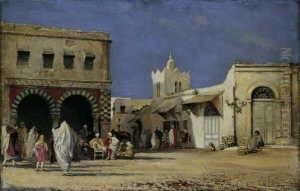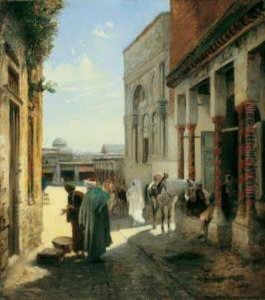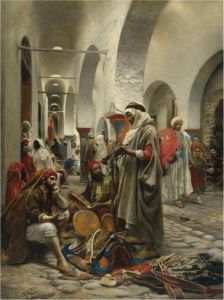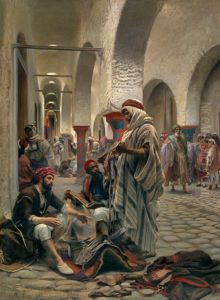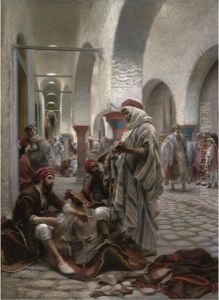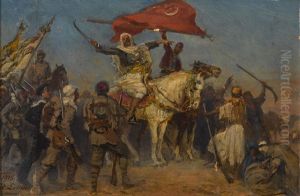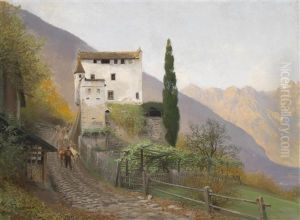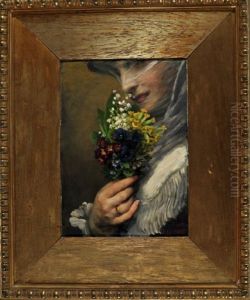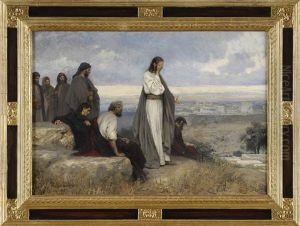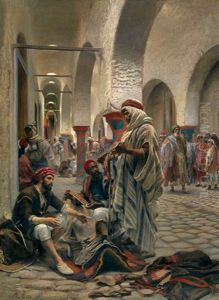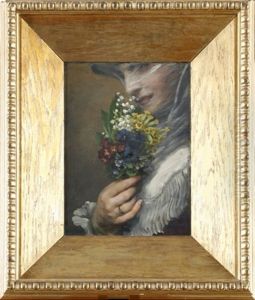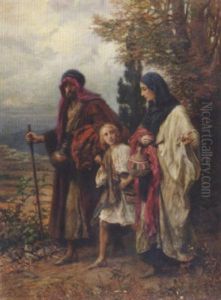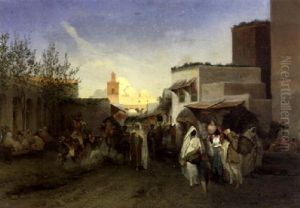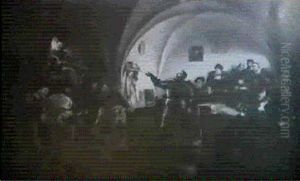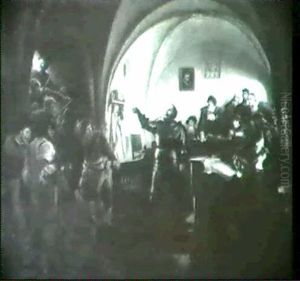Anton Robert Leinweber Paintings
Anton Robert Leinweber was a German painter and illustrator born on May 3, 1845, in Frankfurt am Main. His artistic talents emerged at an early age, and he pursued his passion for art through formal education. Leinweber studied at the Städelsches Kunstinstitut in Frankfurt under the tutelage of Jakob Becker and Edward von Steinle, both of whom played a significant role in shaping his early artistic style.
Leinweber's oeuvre primarily included genre scenes, historical paintings, and murals. His historical paintings often depicted scenes from German history, mythology, and literature, which resonated with the Romantic nationalist sentiments prevalent during his time. He was particularly influenced by the works of the old masters, and his genre scenes were noted for their attention to detail and the vivid portrayal of everyday life.
Throughout his career, Leinweber received several commissions for large-scale frescoes and murals, which are among his most notable contributions to the art world. He worked on projects for public buildings and churches, with one of his most famous works being the frescoes at the Kaisersaal in the Römer, Frankfurt's city hall. These frescoes showcase significant events in the history of the Holy Roman Empire and highlight Leinweber's skill in creating grand historical narratives.
In addition to his paintings, Leinweber was also a prolific illustrator. He contributed illustrations to various publications, including books and magazines. His illustrations often accompanied texts related to German folklore and legends, further emphasizing his interest in the nation's cultural heritage.
Anton Robert Leinweber's contribution to the arts was recognized in his time, and he was a respected figure in the German art community. He continued to work and create art until his death on February 1, 1921, in Oberursel, near Frankfurt. His legacy is preserved in the collections of various German museums and through the murals and frescoes that adorn the walls of the buildings for which he was commissioned. His work remains an important part of the study of 19th-century German art, particularly in the context of the Romantic movement and the burgeoning sense of national identity during that period.
